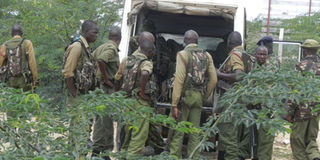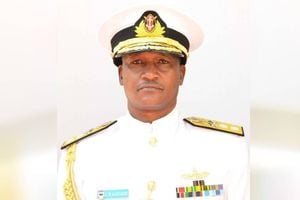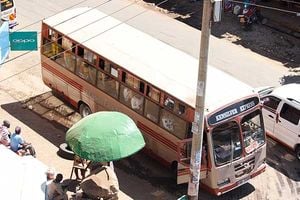Kenyans ignore the turmoil in Turkana at their own peril

Security operations at Kainuk in Turkana South District ready for rescue operations at Lorogon, Nakwamoru villages. PHOTO: File | NATION
What you need to know:
- By a twist of fate, Turkana is now the richest region in Kenya, with close to 400 million barrels of crude oil and 250 billion cubic metres of water discovered.
- Political scientists are drawing worrying similarities between the Turkana situation and that of the Niger Delta conflict in Nigeria.
Nobel laureate Wangari Maathai appears to have foreseen the unfolding crisis in Turkana.
“In a few decades,” she said, “the relationship between the environment, resources and conflict may seem almost as obvious as the connection we see today between human rights, democracy and peace.”
In Kenya, attention is already on the unfolding developments in Turkana County, where inter-tribal conflicts are occurring with increased frequency.
This is just one of the warnings that the socio-political and economic dynamics in Turkana are the same as those in areas where armed conflict has started following the discovery of exploitable natural resources.
Political scientists are drawing worrying similarities between the Turkana situation and that of the Niger Delta conflict in Nigeria.
Local intellectuals from these communities are also sounding the siren hoping Kenya will see the oncoming train.
“We are seeing a Niger Delta in the making. This is going to be worse than Niger Delta”, Dr Ekuru Aukot, a legal scholar from the Turkana community, warned in October this year.
One of the dynamics that drive resource-based conflicts is marginalisation. Areas that have previously been marginalised before the discovery of natural resources are more prone to instability.
Turkana is one of Kenya’s marginalised areas. In 1965, the government published Sessional Paper No. 10 to guide the country’s development.
The paper stated: “One of our problems is to decide how much priority we should give in investing in less developed provinces. To make the economy as a whole grow as fast as possible, development money should be invested where it will yield the largest increase in net output.”
Turkana was not considered to have any value and was, therefore, left out. The result is that today, nine out of ten residents of Turkana live below the poverty line and 75 per cent survive on food aid.
By a twist of fate, Turkana is now the richest region in Kenya, with close to 400 million barrels of crude oil and 250 billion cubic metres of water discovered. The stone that the builders rejected has now become the corner-stone.
This will only get worse when Kenya starts ailing from “the Dutch Disease”, a phenomenon in which the currency of a country becomes so strong after discovery of natural resources that its agricultural products lose competitiveness in the world.
Turkana oil will lead to a collapse of agriculture as the major foreign exchange earner and oil will become the main source of development funds.
When a people who have suffered starvation and death out of neglect become the means of survival of the country, the politics that will arise will not be pretty.
A second important dynamic is the proliferation of arms. According to a statement issued by MPs from Turkana and Pokot at a meeting in Eldoret in July, over 50,000 guns are held by herders in this region.
Also held are sophisticated artillery weapons obtained during the Sudanese civil war. This means that this region can raise an infantry of as many men as the guns available.
To see what these numbers mean militarily, consider that estimates from the International Institute of Strategic Studies put Kenya’s armed forces strength at just about 24,000 active personnel.
A third dynamic is the existence of conflict in the region prior to the discovery of the resources. Turkana is known for ethnic conflicts and is possibly the most unstable region in Kenya.
Last weekend, militias from Pokot invaded Turkana villages and are holding the residents hostage. What makes this instability dangerous to our national interest is that the Turkana are culturally and linguistically homogenous with some of the cross-border combatants from Uganda and South Sudan with whom they fight for resources.
With the discovery of abundant water supplies, these communities are likely not to fight again, but may instead turn their attention to oil, and together enforce what they consider their ancestral claim to the new resource.
The last important variable is corruption and human rights abuse. Dr Aukot describes Turkana as “the crucible of human rights violations”.
The government and Tullow Oil have been accused of grabbing community land and forcible transfer of populations. These are the essential dynamics that result in armed rebellion following discovery of natural resources.
We should urgently take heed of this warning.
Mr Mwangi is a Nairobi lawyer. ([email protected])





